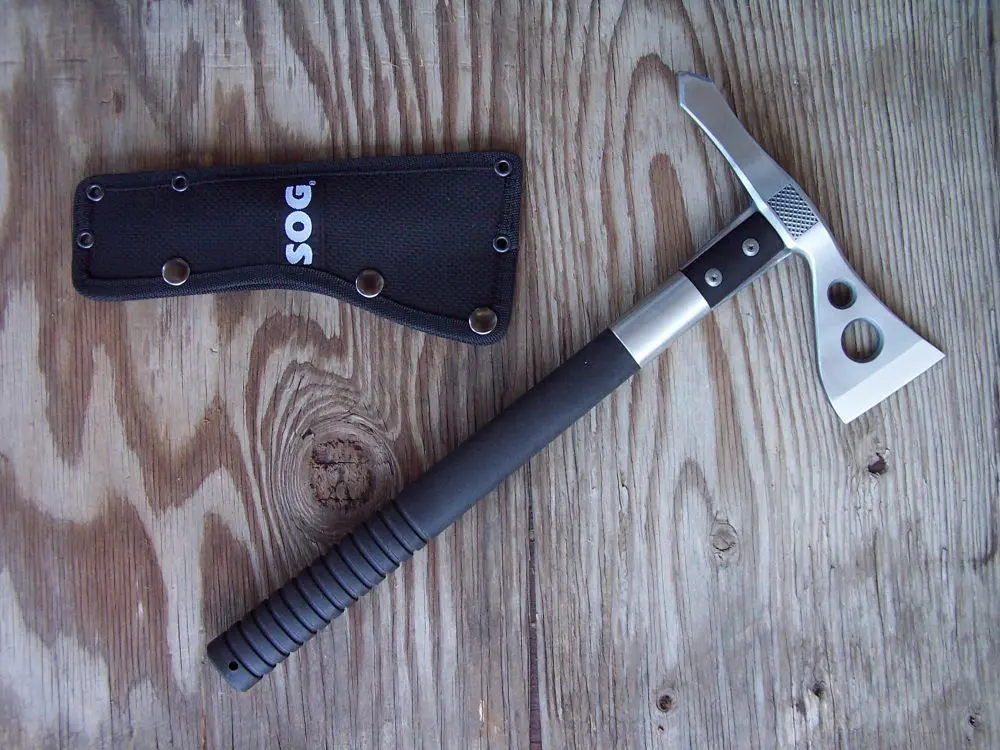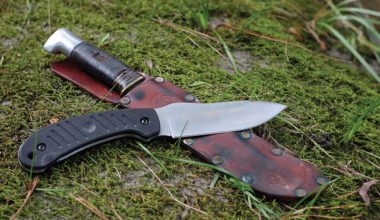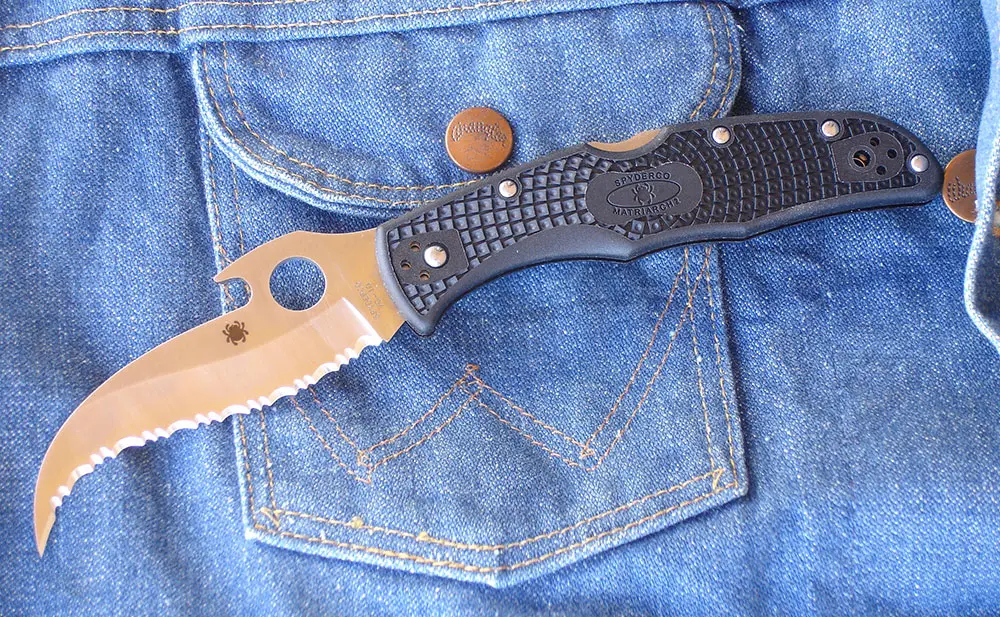Last year, I spent my third season in the last great frontier—Alaska. I intended on hiking, camping and fishing as much as possible.
In the small port city of Whittier outside Anchorage, I wandered into a general store/fishing shop before a trip up the mountain to see Portage Glacier. In the glass counter, I saw a small lightweight fixed blade by Cold Steel, the latest and least expensive of a series of four knives designed by custom smith Lloyd Pendleton. Since it weighed less than four ounces with sheath, I thought I’d give it a try. I remembered seeing a few reviews of this knife. Here was my chance to try it out.
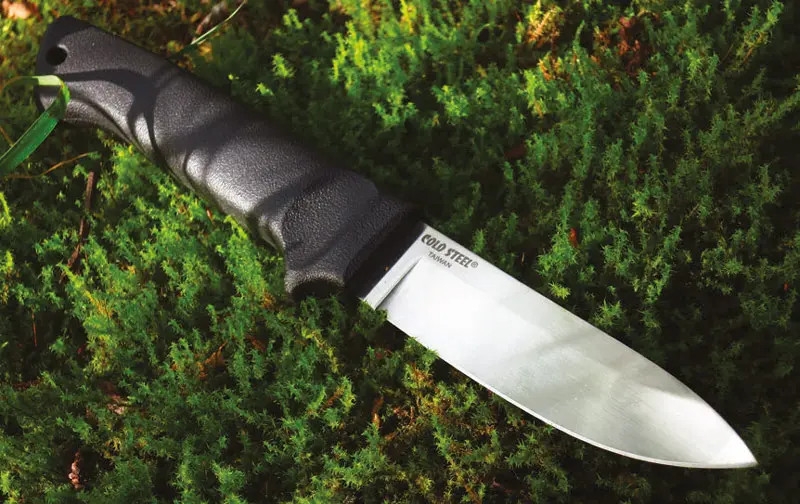
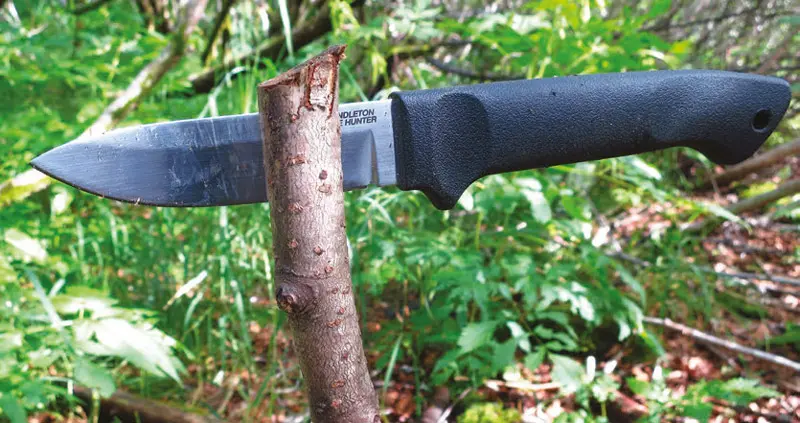
SPECIFICATIONS
Cold Steel uses German 4116 Krupp stainless steel for their more affordable line of knives, which includes the Finn Bear, Canadian Belt Knife, and the Roach Belly.
The blade length of the Pendleton Lite Hunter is 35/8 inches and it’s 8½ inches overall. The knife weighs 2.7 ounces and a whopping 3.8 ounces with sheath. Blade thickness is 3/32 inch, my favorite thickness for a knife that’s just going to be used as a knife, not for breaking apart logs or prying.
The handle length is made of highimpact polypropylene. The sheath is made of Cod-Ex™, which is simply Cordura nylon.
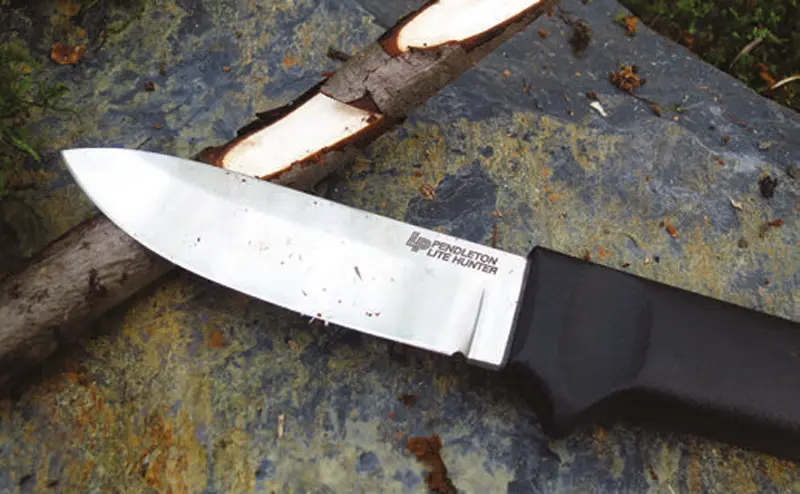
THE LAST FRONTIER
In the southwestern part of Alaska during the summer months, the sun sets around 2300 hours and rises around 0330. This means there’s plenty of time to play. I had gotten by in Alaska with just a small Swiss Army Knife for two seasons, but a fixed blade has many advantages.
When it comes to doing dirty work such as cleaning a fish or cutting up food, it’s easier to reach for a fixed blade, use it, and then whoosh it around in a creek to clean it. A folding knife has many places that can accumulate gunk. A fixed-blade knife can never close on your hand like a folder can when carving into green wood. I’ve had the blade of a non-locking folding knife get stuck in green wood upon pulling the blade out of a deep cut. Luckily for me, I had gloves on.
I set up a few camps in different places in the forest where I would cook food, make coffee, and practice some woodcraft. The knife was not used for heavy batoning but was used for light batoning into green wood for making camp implements. Green alder thickets are everywhere in Alaska and thus served as my main building materials for making potholders, grills, tripods, and roasting sticks. I made a few different cooking rigs that always included a way to suspend my MSR one-quart kettle for boiling water.
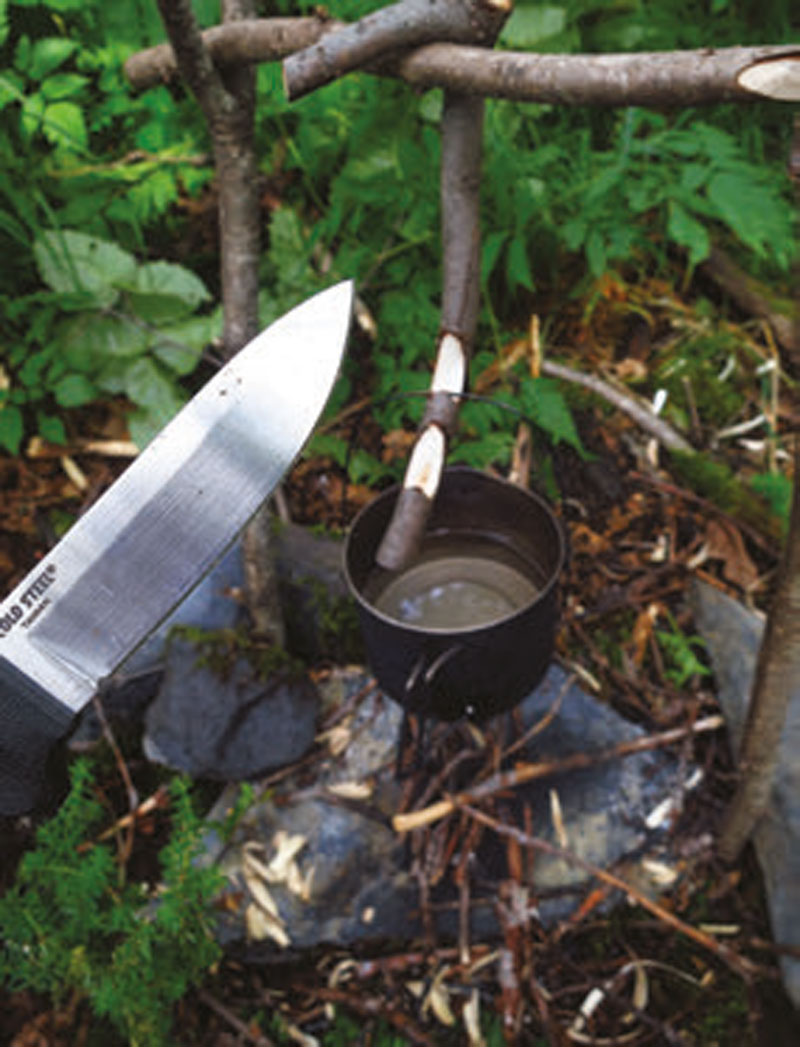
One way to make this type of set-up is to procure a few green alder branches about broomstick thickness that are as straight as possible. Make sure to select a branch with a Y junction. With the Pendleton Lite Hunter, I proceeded to baton the lengths needed for the project. After I sharpened the end to a point, I stuck one branch with the Y junction vertically into the moist ground. Two feet away, I placed the other straight stick into the ground. Then I split the branch with the knife via the help of a baton. I took the final piece of green alder branch and sharpened one end like a flathead screwdriver. I rested one end into the Y joint and wedged the end I had sharpened into the split.
Lastly, by batoning two V notches into the green wood and carving them out, I made a pot holder to suspend the kettle over the flame. As expected, the super-sharp blade geometry allowed the blade to sink in deep without much effort.
I used the Pendleton Lite Hunter on some dry spruce to make a few fuzz sticks for a fire. Getting into dry wood is hard to do in Alaska, where everything is usually damp or just flat-out sopping wet. Making the fuzz sticks proved an easy task for the thin blade. I was surprised at how sharp the German 4116 Krupp stainless steel held an edge.
As a final test, I left the Pendleton Lite Hunter outside in the sheath it came with, all wet and dirty, for about two weeks. When I checked, it had a few rust spots that wiped off easily with a kitchen Scotch-Brite sponge. Props to the German 4116 Krupp stainless steel.
The sheath really leaves something to be desired. It’s difficult to pull the knife out or put it away without some type of wrestling match. I recommend using the money saved on the knife to invest in a decent leather or Kydex sheath for the Pendleton Lite Hunter. I know I am!
